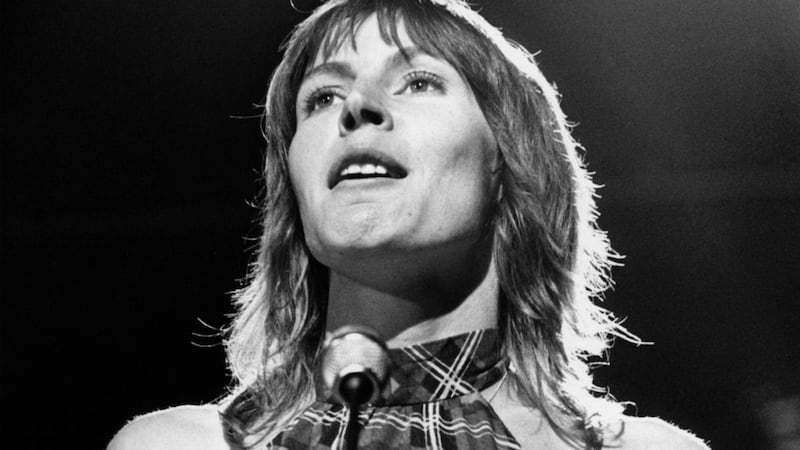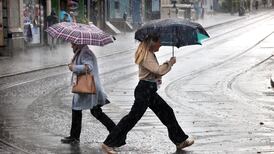Helen Maxine Lamond Reddy
Born: October 25th, 1941
Died: September 29th, 2020
Helen Reddy, the Australian-born singer whose 1972 hit song I Am Woman became the feminist anthem of the decade and propelled her to international pop music stardom, died on Tuesday in Los Angeles. She was 78.
The death was confirmed by her children in a message posted on her official fan page on Facebook. Reddy suffered for decades from Addison’s disease (she had a kidney removed when she was 17) and, since at least 2015, from dementia.
I Am Woman reached No 1 on the Billboard charts at the end of 1972 (a good six months after it was released – individual call-in requests helped build radio play) and earned her the Grammy Award for best female pop vocal performance. She was the first Australian-born artist to win a Grammy and the first to make the Billboard 100 record charts.
Some male observers called the song – beginning with the words “I am woman/ Hear me roar/ In numbers/ Too big to ignore” and sung by a five-foot-three soprano – angry, man-hating, dangerous or all three.
“That simply underlined the many things women needed liberating from,” a writer for Variety reflected in 2019. “Nobody called Sinatra a menace when he sang My Way, a no-less-straightforward hymn to self-determination.”
During the 1970s, six of Reddy’s songs – including Delta Dawn, Angie Baby and No Way to Treat a Lady – went to No 1 on the Billboard chart. Nine others – including You and Me Against the World and Leave Me Alone (Ruby Red Dress) – made the Top 10. More than three decades later, the Chicago Tribune declared her the “queen of ’70s pop.”
Helen Maxine Lamond Reddy was born on October 25th, 1941, in Melbourne, Australia, the only child of Max Reddy, a writer, producer and actor, and Stella (Lamond) Reddy, an actress whose stage name was Stella Campbell. Her father was in New Guinea, serving in the Australian army, when she was born. The Reddys performed on the Australian vaudeville circuit, and Helen began joining them onstage when she was four.
Rebelled
At 12, she rebelled by quitting show business and going to live with an aunt while her parents toured. But her financial situation – after an early marriage, parenthood and divorce – persuaded her to return.
Reddy had a solid reputation in Australian television and radio when she won a 1966 talent contest sponsored by Bandstand, a Sydney pop music television show. The prize was a trip to New York City and a record company audition there. The audition did not pan out, and her career got off to a slow, discouraging start. Before Capitol Records signed her in 1970, at least 27 record labels rejected her, and she and her new husband, Jeff Wald, who was now her manager, moved – first to Chicago, then to Los Angeles.

I remember the Vegas days when it was two shows a night, seven nights a week, and it became so rote that I'd be thinking about wallpaper while I was singing
Times were hard, especially when the couple lived in New York. In The Woman I Am: A Memoir (2005) she wrote: “When we did eat, it was spaghetti, and we spent what little money we had on cockroach spray.”
Reddy’s first hit was a 1971 cover of I Don’t Know How to Love Him, a hit from the award-winning musical stage show Jesus Christ Superstar. The success of I Am Woman, with Reddy’s lyrics and Ray Burton’s music, came a year later.
She was a frequent guest in the early 1970s on variety, music and talk shows such as The Mike Douglas Show, The Carol Burnett Show, The David Frost Show, The Merv Griffin Show and The Glen Campbell Goodtime Hour. The Helen Reddy Show (1973) was an eight-episode summer replacement series on NBC.
She made her big-screen debut in the disaster movie Airport 1975 (released in 1974) as a guitar-playing nun who comforts a sick little girl (Linda Blair) on a stricken 747. Reddy always liked to point out that Gloria Swanson and Myrna Loy were also in the cast.
That was followed by a starring role in the Disney movie Pete’s Dragon (1977), as a sceptical New England lighthouse-keeper who doubts an orphaned boy’s stories about his animated fire-breathing pet.
After a cameo in Peter Frampton and the Bee Gees’ film version of Sgt Pepper’s Lonely Hearts Club Band (1978), it was on to guest spots on The Love Boat and Fantasy Island.
Glory days
By the 1980s, her glory days were largely in the past, and she was bored. “I remember the Vegas days when it was two shows a night, seven nights a week,” she told the Chicago Tribune in 2013, “and it became so rote that I’d be thinking about wallpaper while I was singing.”
When Reddy retired in 2002, she meant business, going back to school, getting a degree in clinical hypnotherapy and practicing as a therapist and motivational speaker. In 2012, after a public appearance at her half-sister’s birthday party, she announced a show business comeback and made several concert appearances in the United States before retiring again.
She was a strong believer in past-lives regression. (In 1969, as a newcomer in Los Angeles, she studied parapsychology part-time at UCLA.) In her 2005 memoir, in a slightly surreal section on British royalty, she declared that the Duchess of Windsor had been the reincarnation of Richard III and that Elizabeth II and Princess Margaret had been, in past lives, the little princes Richard had once locked in the Tower of London.
Reddy married and divorced three times. In 1961, she married Kenneth Claude Weate, an older musician who was a family friend. They had a daughter and divorced in 1966. In 1968, she married Wald, and they had a son. They separated in 1981, when he checked into a treatment facility for cocaine addiction, and divorced two years later. That same year, she married Milton Ruth, a drummer in her band. They divorced in 1995.
She is survived by her two children, Traci Wald Donat, a daughter from her first marriage, and Jordan Sommers, a son from her second, and at least one grandchild.
– New York Times











